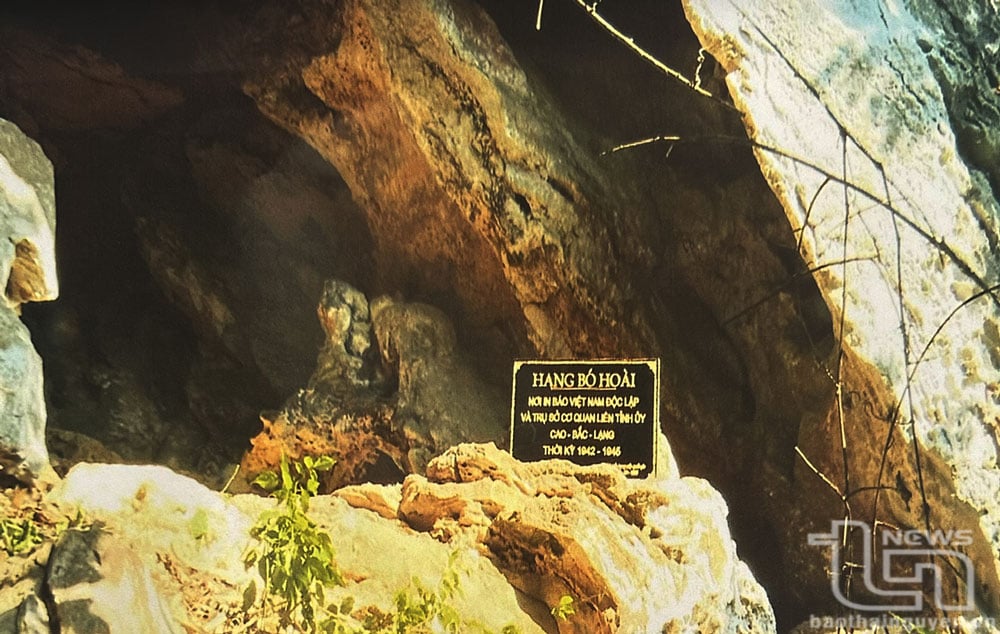 |
| Bo Hoai relic - workplace of Vietnam Independence Newspaper. Photo: TL |
National Highway 3, we have traveled back and forth many times, especially during the years working in the television industry, setting up many bridges in major events. Again, during the years in Bac Thai province (Thai Nguyen and Bac Kan merged in 1965 and separated in 1997), we went to write reports about opening the Bac Cho Ra road, went all the way up to Tai Ho Xin pass to write about stopping the enemy in the border war in 1979... Then we went to make the film "The Road to the South"... but never before have the emotions been as overwhelming as this time because we were working on an event that is not easy to encounter in life - 100 years of journalism...
The official history of the country records: World War II broke out (1939-1945), the French colonialists surrendered to Nazi Germany in the mother country, but intensified the suppression of the revolutionary movement in the colonies. While the revolutionary movement was still in its infancy, after 30 years of wandering abroad to find a way to save the country and save the people, on January 28, 1941, leader Nguyen Ai Quoc and a number of cadres and party members returned to Pac Bo village, Truong Ha commune, Ha Quang district, Cao Bang province.
From May 10 to 19 at Khuoi Nam hut, Pac Bo, leader Nguyen Ai Quoc, as a representative of the Communist International, convened the 8th Central Party Conference. The conference decided on the Party's new policy, making national liberation the central and urgent task of the entire people and proposed the establishment of the Vietnam Independence League (abbreviated as Viet Minh); building revolutionary bases, building and developing armed forces.
At the same time, to promote propaganda, mobilization,education and organization of revolutionary movements among the people, leader Nguyen Ai Quoc published the Independent Vietnam Newspaper, which he himself wrote, edited, printed and published...
In the process of learning about Ho Chi Minh's journalism career, we learned that: While he was still abroad, Uncle Ho also published 9 newspapers. Thanh Nien newspaper was born in Guangzhou (China) on June 21, 1925. He directly published 88 issues by using an iron pen to write letters on wax paper and then printing tipo on paper...
The first issue of the newspaper Vietnam Independence was published on August 1, 1941, numbered 101, published at the Khuoi Nam 2 shack, Pac Bo (Ha Quang). The front page of the first issue had an editorial stating: The West aims to make our people stupid and cowardly. The newspaper "Vietnam Independence" aims to make our people no longer stupid and cowardly, to know things, to unite, to fight the West, to fight the Japanese, to make "Vietnam independent", equal, free!
The front page of issue 103 published a propaganda painting drawn by leader Nguyen Ai Quoc of a man holding a loudspeaker, in a calling pose. The man and loudspeaker combined to form the newspaper's name, and published four verses: "Vietnam's independence blows the trumpet/Calling on our people, young and old/To unite as firmly as a block of iron/To save our country together."
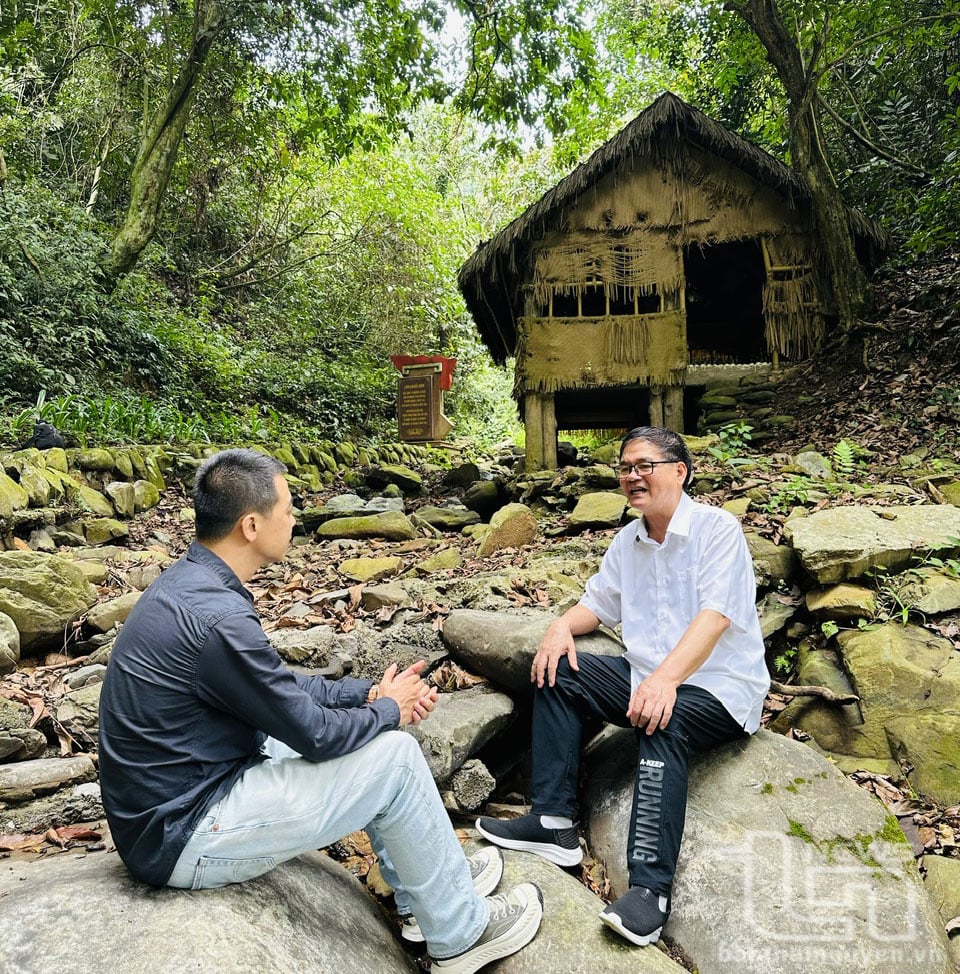 |
| At Khuoi Nam hut, where the first issues of Vietnam Independence Newspaper were edited and printed. |
According to the Pac Bo Museum, Uncle Ho always followed Lenin's words: The newspaper is a tool for propaganda, agitation, organization and leadership. Therefore, Uncle Ho tried to publish a newspaper, very secretly because there were always French and Japanese spies lurking. To publish a newspaper, there must be printing stones, the brothers searched for stone tablets and then ground them into printing blocks.
Talking with Mr. Hoang Duc Chiem, in Hong Viet commune, Hoa An district, Cao Bang - where for a time the Independent Vietnam Newspaper was published in Bo Hoai cave, we were told by him:
- Local people love to read newspapers because everything they read is meaningful to them. They also organize newspaper reading groups and secretly send news to the newspapers. They also find ways to propagate to the soldiers to read the newspapers to do military work. Newspapers must be written in large letters so that people can read them easily; articles must be very concise, easy to understand, and easy to remember.
Ms. Nong Thi Tien, cultural officer of Hong Viet commune, after giving us many documents, noted:
- In April 1942, leader Nguyen Ai Quoc decided to move the agency from Pac Po to the Phja Nga mountain area (Lam Son, Hong Viet, Hoa An). This area was called Lam Son Base Area to remind of the glorious tradition of Lam Son base when Le Loi raised an army to revolt against the Ming army. The Vietnam Independent Newspaper agency also moved from Pac Bo to Lung Hoai cave, Bo Hoai... and published from issue 120 on March 10, 1942. The Vietnam Independent Newspaper agency was located in Bo Hoai cave, operated secretly with very few people, so most of them had to do many jobs. Comrade Be Nhat Huyen was assigned to arrange articles, create newspaper frames, write in reverse on stone surfaces, and then print the newspaper with comrade Phuong Trieu An.
The Independent Vietnamese Newspaper was published every 10 days, with 400 copies per issue. Because it was lithographically printed, the maximum number of copies that could be printed at a time was 400. If more were to be printed, the stone had to be ground and rewritten. The Independent Vietnamese Newspaper, from its first issue, sold for 1 cent per copy, at that time the price of 1kg of rice was 3 cents. This demonstrated the practicality of the newspaper for the revolutionary base and masses...
The terrain in Bo Hoai area is very rugged. To get to Bo Hoai, you must first go up to Lung Hoai Valley following the trail to Keo Dung cave before climbing up. The office of the Independent Vietnamese Newspaper is located on a steep cliff, to climb up you must cross a rocky crevice with a bridge to cross...
"Sniffing out" the activities of the Viet Minh, the French colonialists built small outposts everywhere: Ban Giang, Lung Chung, Na Bao, surrounding the Lam Son mountains and forests. The Viet Nam Doc Lap newspaper moved for the third time to Lung De, Minh Tam commune, Nguyen Binh district (now Truong Luong commune, Hoa An district), on the other side of the Lam Son rocky mountain range, and continued to publish regular issues.
Comrade Truong Nam Hien, who worked in the Nguyen Binh District Committee, wrote a poem: The situation of Viet Minh journalists here/The scenery is quite interesting/The house is built right into the cliff/The bed is placed right under the tree/The fire burns rotten wood, burning loudly/The jar catches rainwater and makes it drip full/The work is tireless/Vietnam's independence will not be slow.
Due to the remote terrain of Lung De, the long distance, and the inconvenience of transporting materials; the difficult supply conditions, and the distance from the Inter-Provincial Party Committee, comrade Tong (Pham Van Dong) decided to move the newspaper agency back to Lam Son mountain area, initially staying in Lung Sa cave, then moving to a small cave at the top of Bo Hoai. In August 1942, Uncle Ho went on a business trip abroad, and comrade Tong was assigned by Uncle to stay at home and take charge of the newspaper.
Comrade Pham Van Dong once said: "I founded this newspaper to guide the masses in the revolutionary struggle. The more the enemy terrorizes us, the more regularly we publish the newspaper."
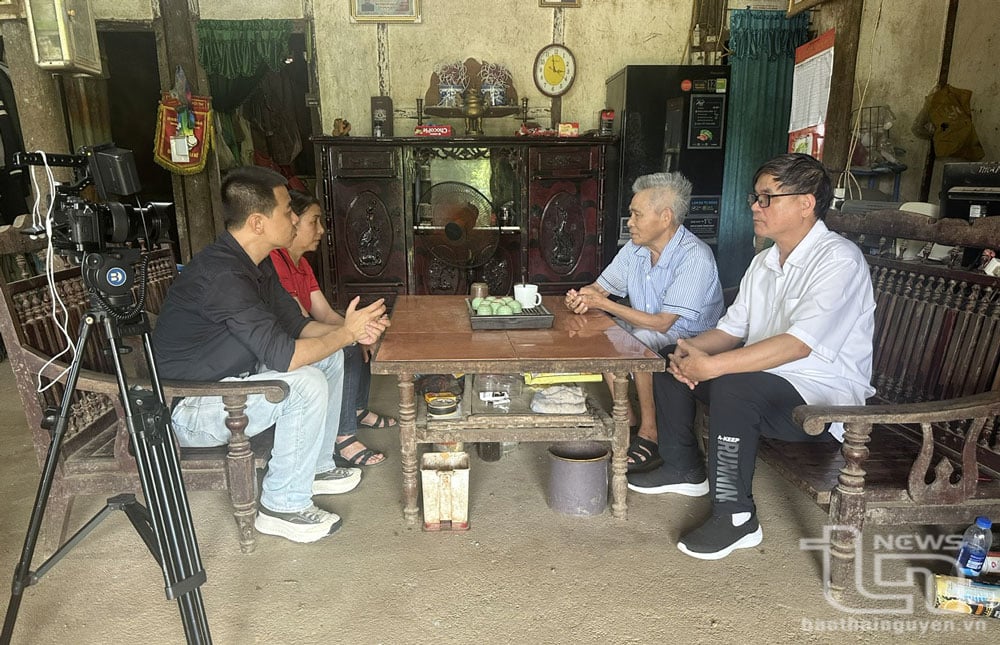 |
| Mr. Hoang Duc Chiem and Ms. Nong Thi Tien talked about the years when the Independent Vietnamese Newspaper was based in their hometown of Hong Viet - Hoa An. |
Mr. Hoang Duc Chiem continued:
- Although the framework of the Independent Vietnam Newspaper is small, its articles are simple and concise, so its influence is enormous. Wherever the newspaper is published, the revolutionary influence spreads there, and the prestige of the organizations is strengthened there. Initially, the Independent Vietnam Newspaper belonged to the General Department of the Viet Minh Cao Bang from issue 101 to issue 128. When the revolutionary area expanded, connecting the two provinces: Cao Bang and Bac Kan, the Independent Vietnam Newspaper became the agency of the Inter-Provincial Department of the Viet Minh Cao Bang - Bac Kan, from issue 129 to 186. The revolutionary movement continued to rise, expanding to connect the three provinces of Cao Bang, Bac Kan, and Lang Son. The Independent Vietnam Newspaper became the agency of the Inter-Provincial Department of the Viet Minh three provinces from issue 187 to 225…
In addition to printing newspapers, the newspaper's lithographic printing facility also printed propaganda materials into pocket-sized books such as "Ngu Tu Kinh" (Five-Character Sutra), "Dien Ca Chuong Viet Minh"; "History of Our Country" (in verse); "Guerrilla Tactics"; "Russian Guerrilla Experience"; "Chinese Guerrilla Experience"; "The Political Commissar"; "Political Work in the Revolutionary Army"; "Viet Minh Experience in Viet Bac"..., written by Uncle Ho and comrades Pham Van Dong and Vo Nguyen Giap.
On May 7, 1944, the Viet Minh General Department issued the Directive “Preparing for an Uprising”. Comrade Vu Anh, at that time a member of the Party Central Committee, representing the Viet Minh General Department, directly assigned the printing of the above directive to the Viet Nam Doc Lap Newspaper.
The victory at Phai Khat and Na Ngan was prominently published in the Vietnam Independent Newspaper No. 201 on January 5, 1945, with two "Communications" No. 1 and 2 as follows: Communique No. 2: On the morning of November 12, which is the 26th of the Western calendar, at 7:14 a.m., the Propaganda Team of the Vietnam - Liberation - Army arrived at Na Ngan post, Cam - Ly commune, near Bel - Air. They raised the red flag with a five-pointed yellow star, clearly claiming to be revolutionary troops, came to take guns and ammunition from the fascist West, declaring that the Vietnamese revolutionary troops would not shoot Vietnamese soldiers. Calling on Vietnamese soldiers to raise their hands and surrender...".
A day of learning about the first revolutionary newspaper published in the country, our research, meetings, and notes are only brief. However, in the 100-year history of revolutionary journalism, the Independent Vietnamese Newspaper is a brilliant milestone.
Source: https://baothainguyen.vn/xa-hoi/202506/len-coi-nguon-khuoi-nam-bo-hoai-6c915c0/








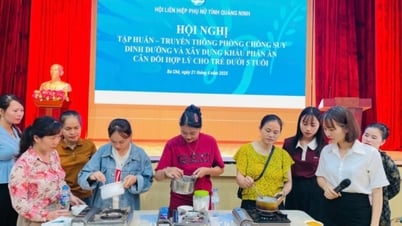





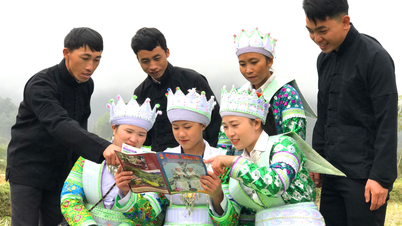







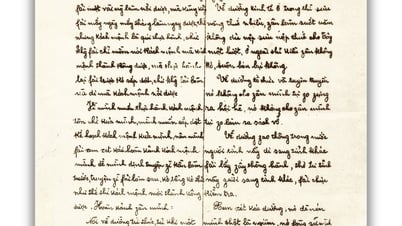
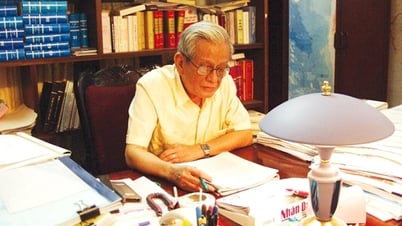
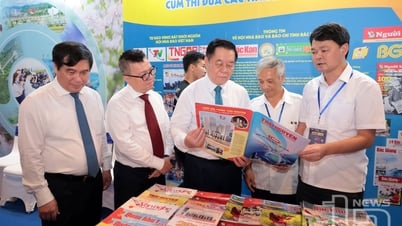






















































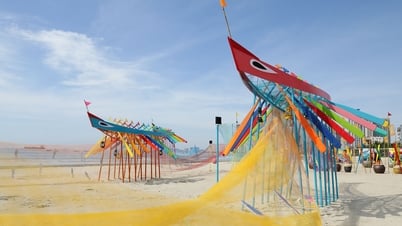




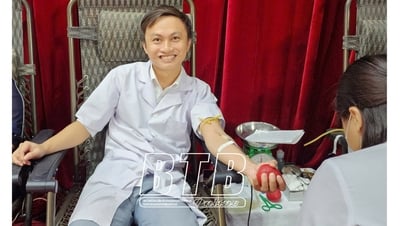


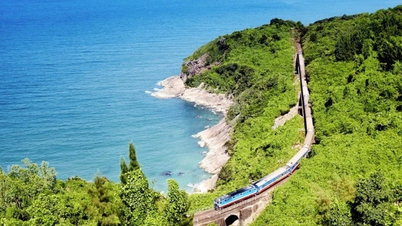












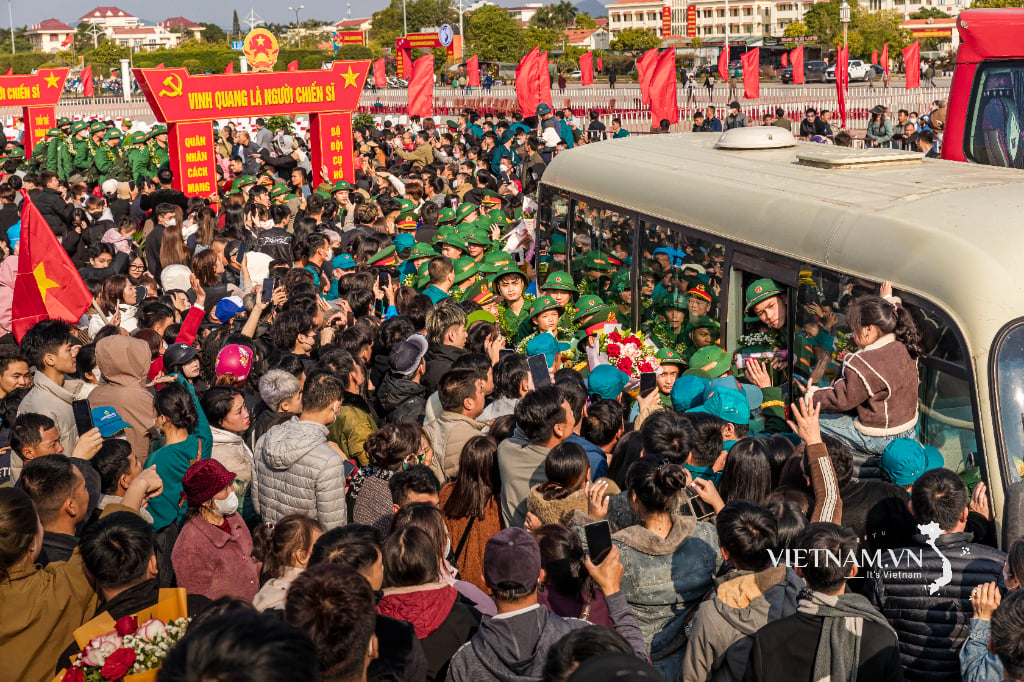

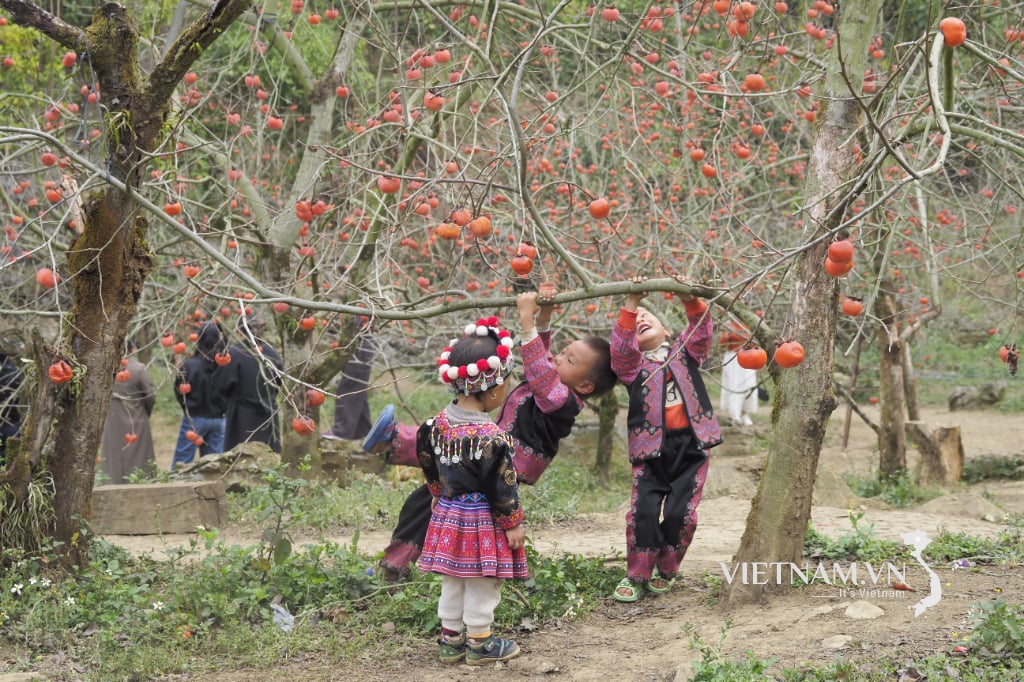

Comment (0)